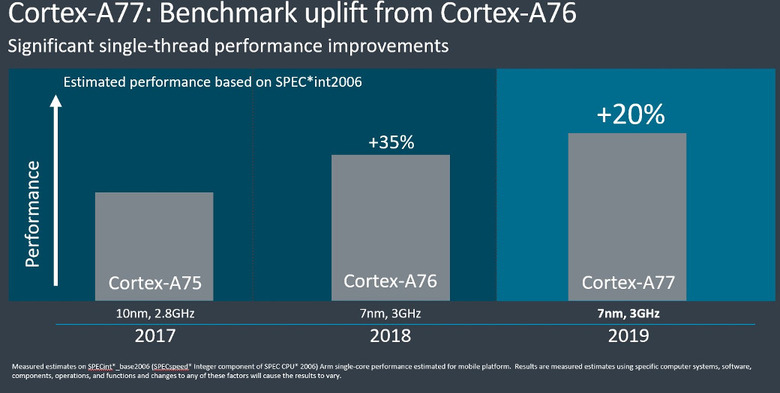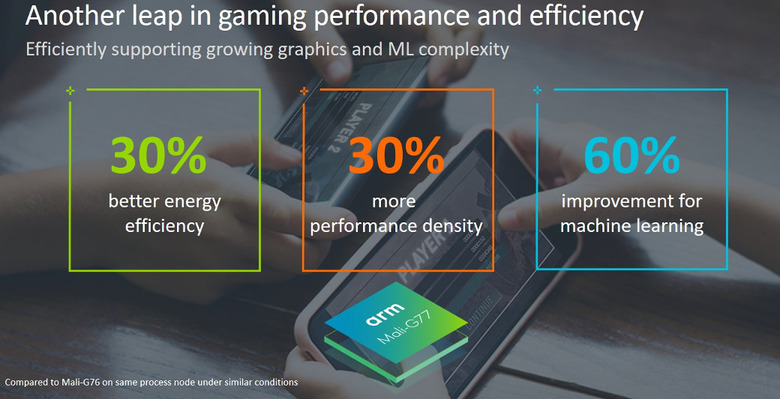ARM Cortex-A77 CPU, Mali-G77 GPU prepare for a 5G future
Two things are trending in smartphones these days, at least if you disregard the current Huawei drama and the Samsung Galaxy Fold fiasco. On the one hand, you have the increasingly fierce competition in the smartphone camera space. On the other hand, network operators and some phone makers are still pushing 5G as the next best thing to happen to smartphones. Whatever the trend, however, ARM's message to OEMs in its new Cortex-A77 and Mali-G77 cores is clear: you'll want these chips to power your 2020 flagship.
ARM boasts that the new Cortex-A77 has a 20% IPC (instructions per clock) improvement over the current Cortex-A76. That number may not look so impressive until you consider its implications. Instead of devoting, say, four Cortex-A76 cores in a processor, you can reduce that to two Cortex-A77 and get the same performance while making room for other silicon. Or you can have four of them and get even more power on one die.

On the graphics side, the Mali-G77 introduces ARM's new Valhall graphics architecture and claims a 40% improvement over its predecessor. Naturally, it benefits mobile gaming and user interfaces alike but it also presents an opportunity for improved machine learning on mobile and embedded devices.
In fact, these two new technologies are heavily towards improving machine learning and AI performance. These days, AI is the buzzword not just in mobile but also in IoT and autonomous driving, markets where ARM is often the computing architecture of choice because of its balance of performance and power efficiency.

More than just dramatically faster speeds, 5G is promised to empower new experiences on mobile that's only possible with said network speeds. However, it also requires that devices, like smartphones, are able to keep up with that larger demand. ARM believes the new Cortex-A77 CPU and Mali-G77 GPU are, but we'll have to wait next year for 5G networks and 5G phones to be ready to test that claim.
